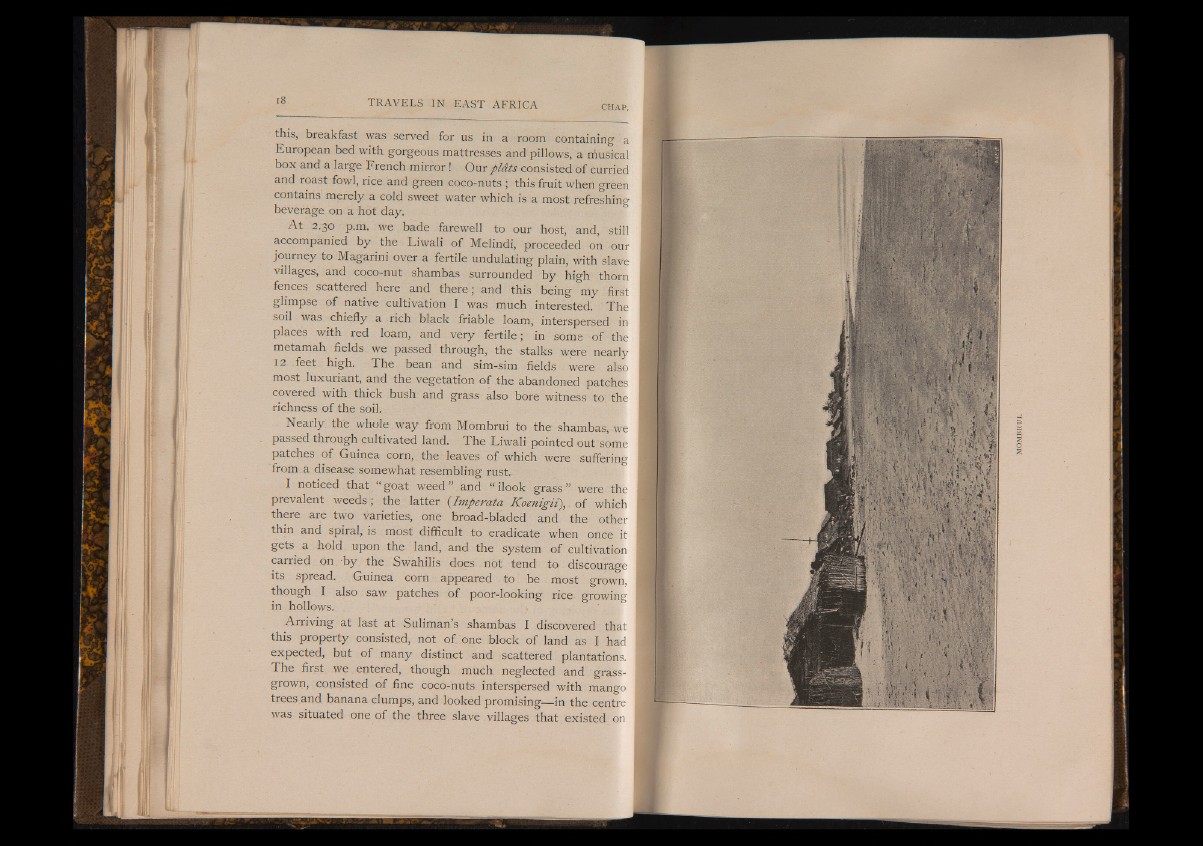
this, breakfast was served for us in a room containinga
European bed with gorgeous mattresses and pillows, a musical
box and a large French mirror ! Our pldts consisted of curried
and roast fowl, rice and green coco-nuts ; this fruit when green
contains merely a cold sweet water which is a most refreshing
beverage on a hot day.
A t 2.30 p.m. we bade farewell to our host, and, still
accompanied by the Liwali of Melindi, proceeded on our
journey to Magarini over a fertile undulating plain, with slave
villages, and coco-nut shambas surrounded by high thorn
fences scattered here and there; and this being my first
glimpse of native cultivation I was much interested. The
soil was chiefly a rich black friable loam, interspersed in
places with red loam, and very fertile; in some of the
metamah fields we passed through, the stalks were nearly
12 feet high. The bean and sim-sim fields were also
most luxuriant, and the vegetation of the abandoned patches
covered with thick bush and grass also bore witness to' the
richness of the soil.
Nearly the whole way from Mombrui to the- shambas, we
passed through cultivated land. The Liwali pointed out some
patches of Guinea corn, the leaves of which were suffering
from a disease somewhat resembling rust.
I noticed that “ goat weed” and “ ilook grass” were the
prevalent weeds; the latter {Imperata Koenigit), of which
there are two varieties, one broad-bladed and the other
thin and spiral, is most difficult to eradicate when once it
gets a hold upon the land, and the system of cultivation
carried on by the Swahilis does - not tend to discourage
its spread. Guinea corn appeared to be most grown,
though I also saw patches of poor-looking rice, growing
in hollows.
Arriving at last at Suliman’s shambas I discovered that
this property consisted, not o f one block of land as I had
expected, but of many distinct and scattered plantations.
The first we entered, though much neglected and grass-
grown, consisted of fine coco-nuts interspersed with mango
trees and banana clumps, and looked promising— in the centre
was situated one of the three slave villages that existed, on